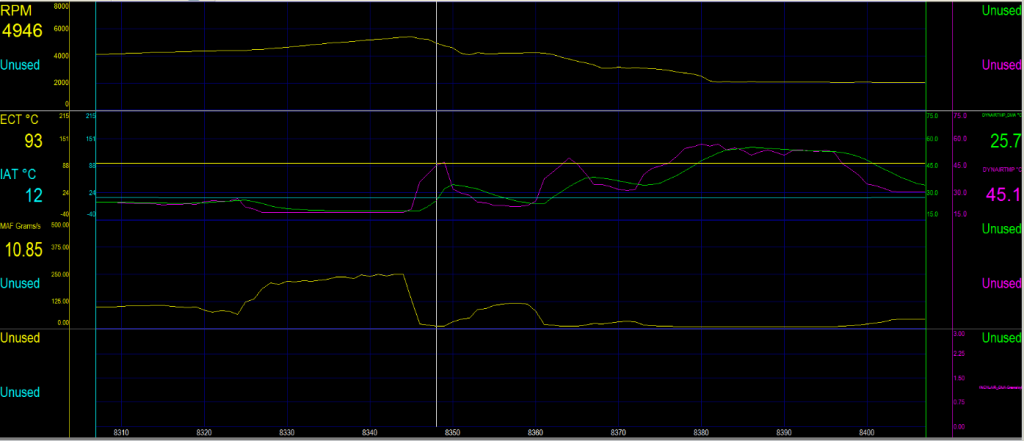Is DYNAIRTMP.DMA indeed the actual Charge Temperature found in the EFILive VE Table calculation.
Charge Temperature is defined as 273.15+IAT+((ECT-IAT)*factor) where factor is obtained from Tables B4901 Charge Temperature Blending and Table B4902 Charge Temperature Filter.
I did a series of log where I kept ECT & IAT constant. Only MAF Airflow changed. I logged DYNAIRTMP.DMA and a Calculated DYNAIRTMP using Table B4901. The DYNAIRTMP.DMA shows a more blunted rise/fall in temperatures in rapid MAF Airflow changes than utilizing the DYNAIRTMP alone.
I have checked for scanning lags (can't find any) and double-checked my math and Look-up Tables and the data appears accurate.
Does this prove that DYNAIRTMP.DMA is utilizing both B4901 and B4902 and is indeed the 'true' charge temperature or am I missing something?





 Reply With Quote
Reply With Quote




